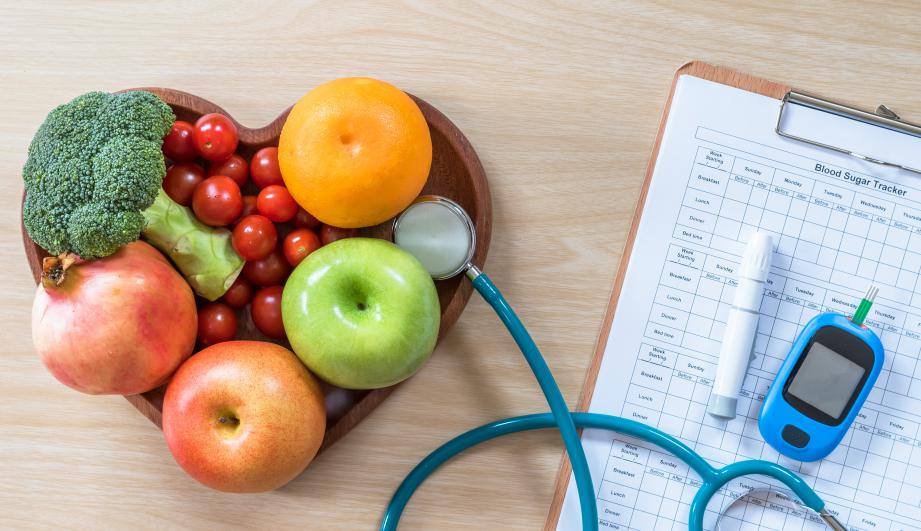The Facts
Type 2 Diabetes, the most common form and also referred to as adult onset diabetes, is a problem in which blood glucose levels rise above normal. The pancreas produces more insulin in response however, over time, the pancreas cannot keep up and make enough insulin to keep blood glucose at a normal level otherwise known as insulin resistance. When there is not enough insulin to move sugar into your cells, the body will rely on alternative sources of energy like from your tissues, muscles, and organs.
At first, the symptoms may be mild and easy to dismiss, however type 2 diabetes develops slowly and worsens over time.
The Symptoms

Frequent Urination:
Elevated glucose levels force fluids from cells, increasing the amount of fluid delivered to your kidneys. This increases urination and may cause dehydration.
Constant thirst :
As water is leached from your body, your tissues become dehydrated leading to constant thirst, a common symptom of diabetes.
Fatigue :
Glucose is the human body’s primary source of energy. When cells cannot absorb sugar due to insulin resistance, you may become fatigued or feel exhausted.
Blurred vision :
In the short term, high glucose levels can cause swelling in the lens of the eye leading to blurry vision. This is a temporary problem that can be corrected by getting blood sugar under control. However, if glucose levels remain high over a long period of time, other eye problems can occur.
Recurring Infections and Sores :
Elevated glucose levels slow down the healing process therefore, injuries like cuts and sores stay open longer making you more susceptible to infection.
If you experience any of these symptoms on a regular basis, consult your doctor who may recommend a simple blood draw to test for diabetes. Routine diabetes screening typically begins at age 45 however you may begin earlier if you are overweight, sedentary, have a family history of type 2 diabetes, and are at a higher risk due to high blood pressure, high cholesterol and high triglycerides.
As the disease progresses unchecked, the symptoms will become more severe and potentially life threatening.
High blood sugar levels over a long period of time can produce symptoms including:
-
- Yeast infections
- Slow-healing cuts or sores
- Dark skin patches
- Foot pain
- Numbness in extremities or neuropathy
If you’re experiencing two or more of these symptoms, consult your doctor immediately. Without treatment, diabetes can become fatal.
The causes of type 2 diabetes are still under research however, a number of doctors believe the disease is a result of a combination of factors.
The Causes

Specifically, insulin is a naturally occurring hormone produced by the pancreas and released when you eat. Insulin helps transport sugar from your bloodstream to cells throughout your body where it’s used for energy. When a person is diagnosed with type 2 diabetes, it means that the pancreas can no longer produce insulin efficiently forcing the pancreas to work harder. Over time, this damages cells in the pancreas eventually rendering the pancreas unable to produce insulin at all.
This causes a build-up of glucose in the blood stream leaving the body starved of energy. Though, doctors are unsure of what triggers this series of events.
Cell dysfunction in the pancreas or with cell signaling and regulation may be part of the problem. A genetic predisposition may further be a factor in addition to obesity, which increases the risk of insulin resistance and diabetes.
While more research is needed fully understand the exact causes of type 2 diabetes, we are aware of certain factors that put people at a greater risk of developing the disease.
Risk Factors

- Certain factors are out of your control:
- A family member who has type 2 diabetes puts you at a greater risk.
- While you can develop the disease at any age, your risk increase as you age, particularly after age 45.
- African-Americans, Latinos, Asian-Americans, and American Indians are at a higher risk than Caucasians.
- A condition known as polycystic ovarian syndrome (PCOS) increases the risk in women.
However, you may be able to reduce or even eliminate your chance of developing diabetes by assessing risk factors related to lifestyle:
- Being overweight means you have higher amounts of fatty tissue which can make your cells more resistant to insulin. In particular, extra fat in the abdomen increases you risk more than extra fat in the hips and thighs.
- Your risk increases further if you live a sedentary lifestyle. Regular exercise causes the body to use more glucose for energy and helps your cells respond better to insulin.
- Eating high amounts processed food, and foods high in fat, saturated fat, and cholesterol such as meat, dairy and eggs can increase your risk of type 2 diabetes
If you have pre-diabetes or have had gestational diabetes, your risk is also greater.
Figuring how to control blood sugar is paramount especially since a number of serious complications can result from type 2 diabetes.
Complications
Diabetes affects virtually every organ in the human body and is life-threatening if left untreated. A number of serious complications include:
- Bacterial infections, fungal infections and other skin problems.
- Nerve damage or neuropathy which can cause a loss of sensation or numbness and tingling in your extremities as well as digestive issues such as vomiting, diarrhea, and constipation.
- Poor circulation to the feet which slows down the healing process if you have a cut or sore and can lead to infection, gangrene and amputation.
- Hearing impairment.
- Retinal damage or retinopathy and eye damage which can cause deteriorating vision, glaucoma, and cataracts.
- Cardiovascular diseases such as high blood pressure, narrowing of the arteries, angina, heart attack or stroke. In particular, women are twice as likely to experience another heart attack after the first one. Additionally, the risk of heart failure quadruples when compared to women without diabetes.
- Kidney damage and/or kidney failure.
Hyperglycemia vs. Hypoglycemia
Hypoglycemia can occur when your blood sugar is low and is often followed by symptoms of shakiness, dizziness, and difficulty speaking. This can usually be remedied with a high sugar “quick-fix” food or drink, such as fruit juice, a soft drink, or a hard candy.
On the other hand, hyperglycemia can occur when blood sugar is high Characterized by frequent urination and increased thirst, exercising and proper nutrition can help regulate your blood sugar level.
How to Treat It

Type 2 diabetes is a treatable and even preventable disease that affects millions of Americans in the US alone. Only a doctor can test you for diabetes and determine how often you have check your blood glucose levels however, by making some lifestyle changes, you can drastically improve your quality of life.
Nutrition
Include foods rich in fiber and healthy carbohydrates in your diet. Fruits, vegetables, beans, lentils and whole grains help keep your blood sugar levels within a normal range. Medical professionals like Dr. Neal Barnard are using high fiber, low fat plant-based diets as a natural cure for type 2 diabetes. Additionally, eat at regular intervals and until you are satisfied.
Weight Management
Weight loss and management can significantly improve and even prevent the onset type 2 diabetes therefore, processed food, and foods high in fat, saturated fat and cholesterol such as meat, dairy and eggs are important to keep out of your diet. Reducing your consumption of pure, liquefied fat or refined oils—vegetable oil in particular—will further promote weight loss.
Exercise
Exercise for 30 minutes daily to promote heart health and to help control blood glucose. This is also an effective tool for weight loss and weight management.
Supplements
Add natural supplements to your diet. Fenugreek seed extract is growing in popularity as both a super food and an effective home remedy for diabetes. Studies suggest that fenugreek seed extract contains properties that can lower cholesterol and blood sugar. FENFURO, a group of furostanolic saponins derived from fenugreek seeds, contains a rich variety of saponins and flavonoids, all substances known to lower blood lipid levels and a play valuable role in glucose regulation. For more information, visit www.fenfuro.com.

Not everyone with type 2 diabetes needs to use insulin. If you do, your pancreas isn’t making enough insulin on its own therefore, it’s crucial that you take insulin as directed. While type 2 diabetes medication is an option, the disease can often be treated and even prevented with a low fat, high fiber plant based diet and regular exercise.
How to Prevent It
While there is nothing you can do about your genetics, ethnicity or age, the life style changes mentioned in this article can drastically improve your quality of life after being diagnosed with type 2 diabetes and even prevent the disease’s onset. The first step is to consult your doctor who can assess your risk, test your blood for diabetes, and prescribe medications if necessary.
The statement and product mentioned in this article have not been evaluated by the FDA to diagnose, treat, cure or prevent any disease.













